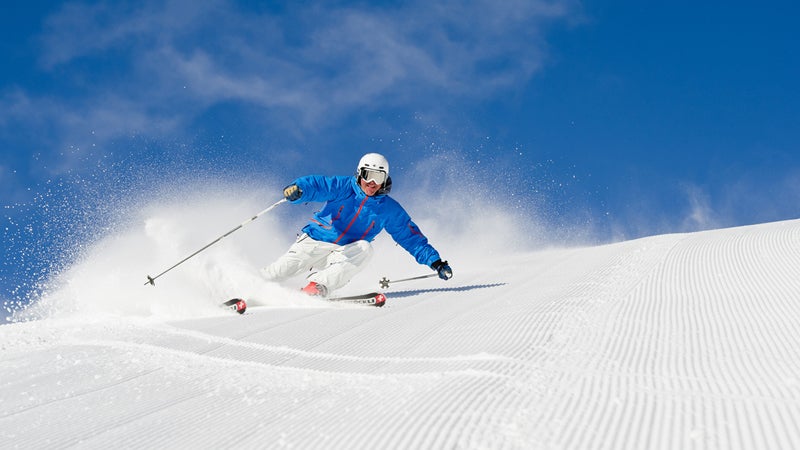This is always a tricky question. There’s plenty of room for debate when it comes to choosing the “right” ski length, and a useful answer should entail a lot of research.
Take the rocker revolution, which had people arguing about how the effective edge—or the length of metal edge actually touching the snow—affects the size of ski you should be on. A ski with an agressive rocker profile has a shorter effective edge, and you can often (but not always) size up.
Since opinions do vary so widely—and can be so heated—I asked a shop owner, an instructor, and a pro freeskier for their tips when it comes to answering this deceptively simple question.
The Ski Shop Owner
Greg Whitehouse has owned , a small, high-end shop in Berkley, Calif., for 14 years. And in that time, he’s turned it into a hard-goods-only store—evidence of his dedication to skis.
Whitehouse suggests starting with a simple rule of thumb when you’re picking out a pair of skis. If you’re an intermediate skier or simply prefer to make smaller, more playful turns, go with a ski that, when held upright, touches the bottom half of your face. A faster skier should look at skis that hit him closer to the top of his head. “Longer skis are more stable, while shorter ones are more maneuverable,” says Whitehouse.
From there, fine-tune your search based on the stiffness and rocker profile of the ski. Size down with a stiffer ski and size up with a softer one, he says.
Then there’s rocker. Whitehouse suggests sizing up if you want a ski with moderate rocker. Go up a whole additional size from there if the ski has an aggressive rocker profile. Remember, more rocker equals less effective edge.
Whitehouse himself tries to get the shortest ski possible that’s still confident at speed, a buying technique he calls “vertical tasting.” If you can demo the skis, start with the longest pair and work your way down.
The Instructor
Dan Ray, Ski and Snowboard School training supervisor at , has been ski instructing for 18 years, and he’s for more than a decade. Ray’s answer was also ski and skill dependent, but he emphasized a focus on an individual’s goals.
A beginner should buy a narrow-waisted ski that reaches to about their sternum, says Ray. Also think about tip rocker. The Squaw school puts first time skiers on shorter skis with a lot of tip rocker so they’re less likely to catch an edge during a turn.
Intermediate and advanced skiers should look for skis that hit them between their chin and their eyes. And ask yourself how aggressive you plan to ski—if you plan to spend most of your time off piste raging through chopped-up crud, go for a longer, wider ski.
The Pro Skier
athlete grew up in Utah’s skiing mecca, Little Cottonwood Canyon. Collinson raced until she was 19 years old, and now splits her time between attending classes at the University of Utah, , and competing in the Freeskiing World Tour.
“Ski length depends mostly on your skiing ability,” Collinson says. For beginners, Collinson suggests a ski that hits you right at your chin. While it’s tempting to buy sexy new powder boards, Collinson suggests steering clear of super fat skis. A skinnier ski—narrower than 80mm—will serve a beginner much better.
As your skiing improves, start looking at longer skis. An intermediate should shoot for a ski that reaches to about their eyes. Advanced skiers can look for a ski that’s just a bit taller than themselves, says Collinson.


